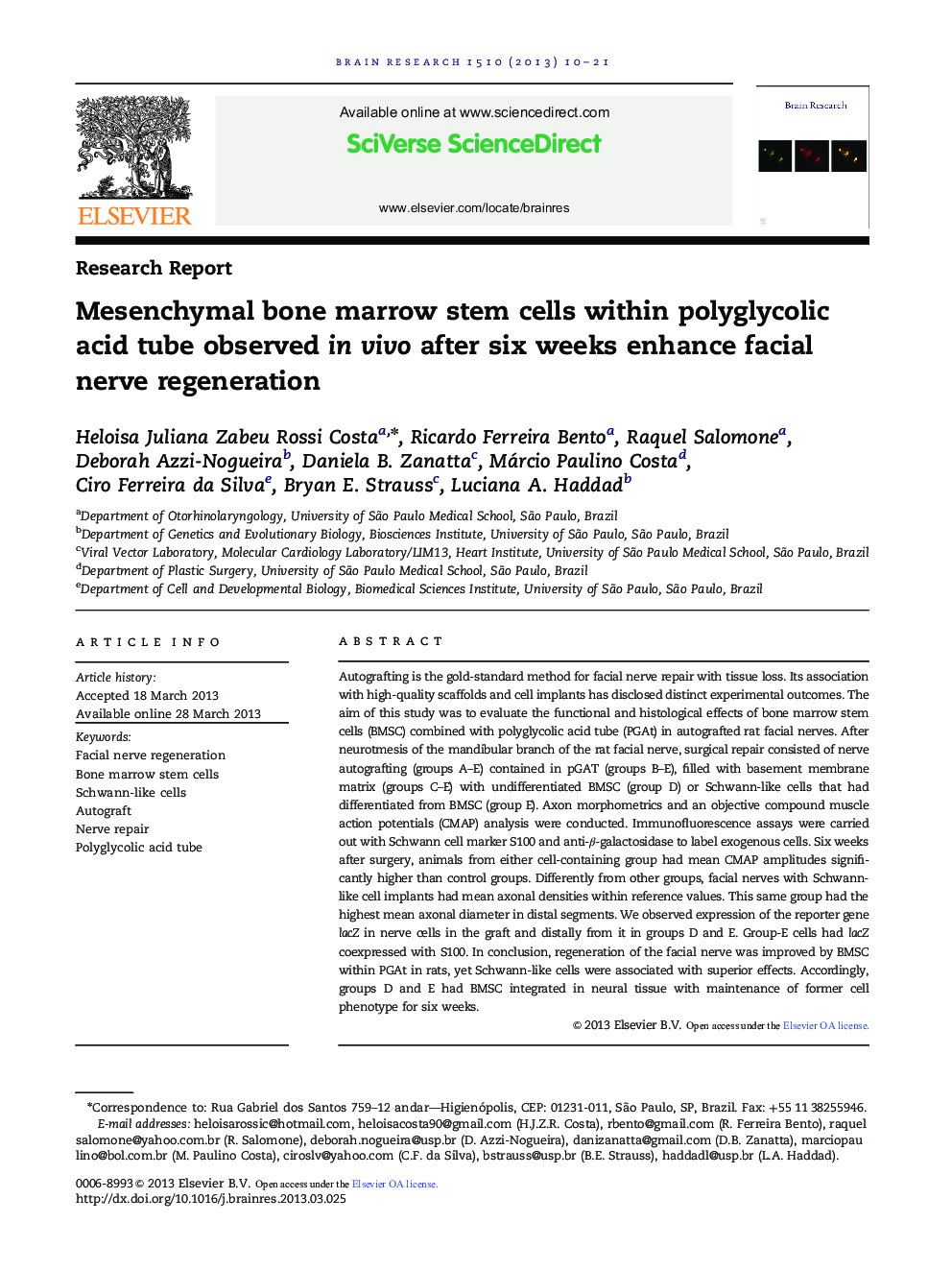| Article ID | Journal | Published Year | Pages | File Type |
|---|---|---|---|---|
| 6263894 | Brain Research | 2013 | 12 Pages |
â¢Basement membrane-embedded BMSC within PGAt improved facial nerve regeneration.â¢Electromyography is an objective and sensitive assessment of facial nerve function.â¢Schwann-like cells increased facial nerve regeneration in vivo.â¢Exogenous cells were observed in nerve tissue six weeks after implantation.
Autografting is the gold-standard method for facial nerve repair with tissue loss. Its association with high-quality scaffolds and cell implants has disclosed distinct experimental outcomes. The aim of this study was to evaluate the functional and histological effects of bone marrow stem cells (BMSC) combined with polyglycolic acid tube (PGAt) in autografted rat facial nerves. After neurotmesis of the mandibular branch of the rat facial nerve, surgical repair consisted of nerve autografting (groups A-E) contained in pGAT (groups B-E), filled with basement membrane matrix (groups C-E) with undifferentiated BMSC (group D) or Schwann-like cells that had differentiated from BMSC (group E). Axon morphometrics and an objective compound muscle action potentials (CMAP) analysis were conducted. Immunofluorescence assays were carried out with Schwann cell marker S100 and anti-β-galactosidase to label exogenous cells. Six weeks after surgery, animals from either cell-containing group had mean CMAP amplitudes significantly higher than control groups. Differently from other groups, facial nerves with Schwann-like cell implants had mean axonal densities within reference values. This same group had the highest mean axonal diameter in distal segments. We observed expression of the reporter gene lacZ in nerve cells in the graft and distally from it in groups D and E. Group-E cells had lacZ coexpressed with S100. In conclusion, regeneration of the facial nerve was improved by BMSC within PGAt in rats, yet Schwann-like cells were associated with superior effects. Accordingly, groups D and E had BMSC integrated in neural tissue with maintenance of former cell phenotype for six weeks.
